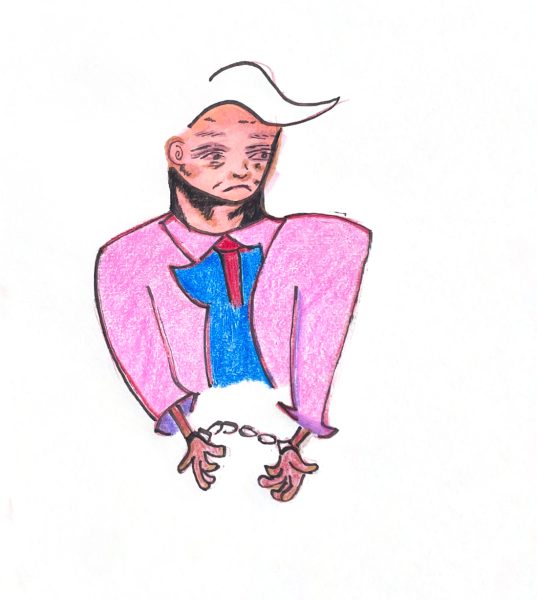Escapable demons: The fall of Aaron Hernandez
January 21, 2020
Former New England Patriots tight end Aaron Hernandez reached the limelight once again this week with Netflix’s latest documentary: “Killer Inside: The Mind of Aaron Hernandez.” The documentary offers a compelling look into the life of the former Super Bowl champion and gives insight into the various aspects of his life that led up to his murder convictions and suicide. What is so striking about the case of Aaron Hernandez is he indulged in a malicious lifestyle yet continued to play football on the biggest stage in the world. Hernandez was charged with murder almost three months before beginning his fourth season with the Patriots. That same year, his team would go on to beat the Seattle Seahawks in Super Bowl XLIX, all while he was on trial for murder in the first degree, where he was found guilty and sentenced to life without the possibility of parole.
While detectives were investigating Hernandez’s role in the murder of friend and semi-professional football player Odin Lloyd, they tied a vehicle at his cousin’s house to a double murder that occurred in 2012, deeming him a suspect. This meant that Hernandez played an entire NFL season despite allegedly murdering two people in a drive-by shooting. Upon being acquitted of these charges, Hernandez was found dead in his cell five days later, ruled as a suicide.
The rise and fall of Aaron Hernandez continues to be a spectacle to the American public. Yet it should also raise a great amount of concern for the National Football League and players who may be facing the same health conditions Hernandez had been facing since he was 17 years old. Hernandez’s family consented to have his brain donated for the sake of science after he died by suicide. Ann McKee, a neurologist from Boston University, analyzed his brain and discovered that Hernandez had the worst case of chronic traumatic encephalopathy (CTE) ever found in an individual his age. McKee’s discovery allowed her to form comprehensive preventative measures for the disease. His advanced stage of CTE (Stage Three) demonstrated that his frontal lobe, the part of the brain primarily responsible for rationality and decision making was drastically deteriorated.
Hernandez committed murder, and the criminal justice system did its job by convicting him. The argument for the CTE playing a role in the murders he committed is strong. His paranoia and irrational behavior makes sense when considering the accelerated neurological damage his brain demonstrated. Would the murders have occurred had Hernandez never played football and took so many hits? That is a question that can never be answered, but what we can do is enact more preventative measures to ensure the brains of young individuals do not face as much damage. Football is violent, and it is also one of the pinnacles of American life. Football clearly isn’t going anywhere, but the National Football League and helmet manufacturers can collaborate to preserve the lives of the men who endure the violent sport for the American public. Concussion protocol needs to be revamped, and although the policy for concussions has seen comprehensive change, the damage players’ brains have seen is irreversible. The National Football League should decelerate brain damage through various initiatives and work to guarantee safety on the field. Aaron Hernandez should serve as a testament to the NFL: these men deserve to have a life after football.












